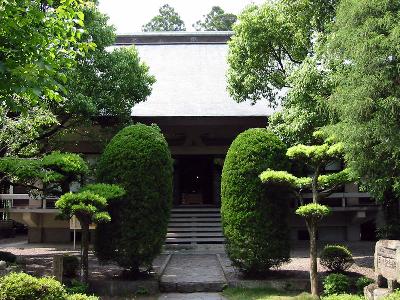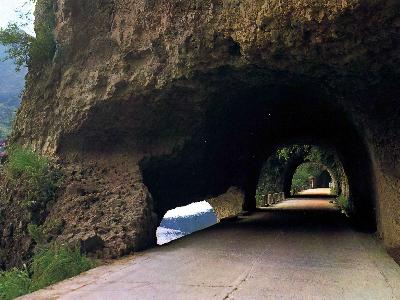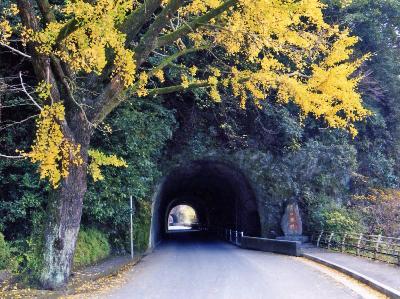|
Gyoku-ho-dorin, the 15th resident priest of Toko Temple (which has a history of 612 years), asked Yoshino Kakunojo, a Hide stone craftsman, to sculpt 521 statues of rakan. Starting from 1863, it took him 19 years to complete.
The sculpting of the rakan was to gain merit for the local people. Usually rakan do not appear to have human face, but these statues are carved to represent four different emotions, which make them peculiar. Also at this site behind the main building is a bussokuseki (a carved stone foot) called 16 Rakan. It is modeled on a similar one at Todaiji Temple in Nara. The size of this rare bussokuseki is about 48.5cm.
The rakan temple, standing in the harsh rocky mountains, was established in 645 by an Indian monk. Many visitors come here to pray for safety and good work.
Within the cave are over 3777 statues, of which the 500 rakan in the Murodo are the most famous. Standing in the entrance is a statue of the Zenkai monk, which contains his relics.
The sculpting of the rakan was to gain merit for the local people. Usually rakan do not appear to have human face, but these statues are carved to represent four different emotions, which make them peculiar. Also at this site behind the main building is a bussokuseki (a carved stone foot) called 16 Rakan. It is modeled on a similar one at Todaiji Temple in Nara. The size of this rare bussokuseki is about 48.5cm.
The rakan temple, standing in the harsh rocky mountains, was established in 645 by an Indian monk. Many visitors come here to pray for safety and good work.
Within the cave are over 3777 statues, of which the 500 rakan in the Murodo are the most famous. Standing in the entrance is a statue of the Zenkai monk, which contains his relics.
| [+ADDRESS] | 
|

















